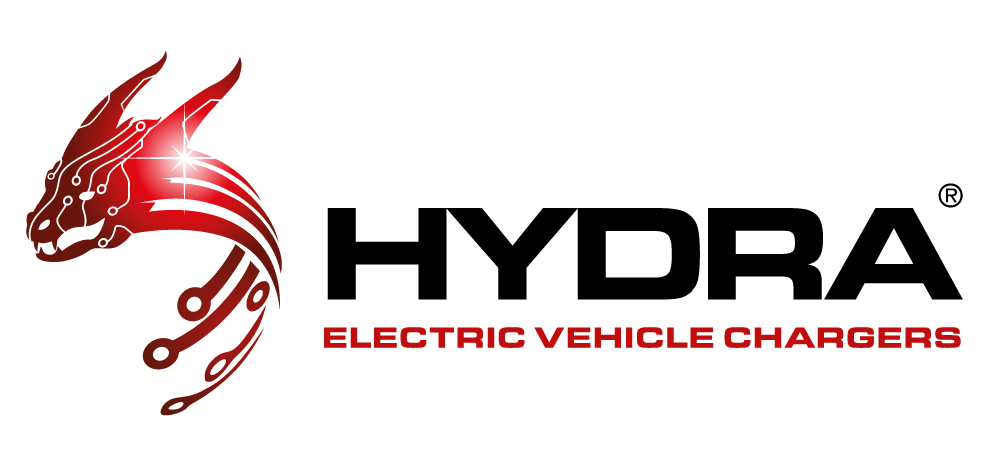FAQ
We have compiled some of the most Frequently Asked Questions below. If you cannot find what you are looking for please Contact Us
Hydra EV Charging Units
No. Electricity doesn’t care what charger it flows through and your EV won’t know the difference either. All EV chargers have to adhere to standards and almost all use the same Type-2 charging cable. So unless they are bundling the charger in for free you’ll probably save money by buying your own charger separately
Our domestic Hydra Zodiac EV charger is priced as indicated (+VAT and installation). Almost all of our commercial EV chargers are configurable to the customer’s requirements and the cost will also be influenced by the type and location of the installation, power input and charging output required. Therefore we will provide a quote upon request.
We work with a nationwide network of Hydra approved and OZEV registered installers for both domestic and commercial EV chargers. We are able to recommend a suitable installer for your location and type of installation. We can also communicate with your chosen installation team to make sure they have everything you need to carry out a smooth installation. Every installation will be subject to a site survey by a qualified installer.
No, only fully qualified electricians should carry out the installation of EV charging equipment. We also advise that you should only choose OZEV approved installers. We work with a nationwide network of Hydra approved and OZEV registered installers.
Hydra Home App
After a charging session has finished you will need to remove the tether from the charge point before starting your next charging session. Without removing the tether you will not be able to authorise a new charging session.
Just simply removing the tether and placing it straight back into the socket will be OK.
The App has a default charging profile as well as a 'Plug & Charge' profile. You can create a new profile which will only operate on the days you select and for the times you enter. So it is possible to set up your Zodiac EV charge point via the Home Charger App to only charge during the hours when your electricity is cheaper - usually at night.
After establishing successful Bluetooth connection with your charge point you will not need to do so again.
Once a charge point has been paired with a user’s account and gained internet connection the charge point will be bound to the user’s account, meaning no one else will be able to gain access to the charge point unless invited by the main user’s account.
Only when the main user removes the charge point from their account will the charge point be available to connect with a new user.
Only the user who authorises a charging session is able to stop that individual charging session and view the real time charging statistics. The statistics can be viewed by all household users in records once the charging session has ended and settled.
A 'Randomised Delay' is a feature of all EV charge points designed to protect the electricity grid. It prevents the scenario where a lot of EV drivers might plug in their EV and set the charging to begin at a specific time - eg 7pm - which could cause a momentary spike across the grid.
The Randomised Delay introduces a random timeframe by which the charge point activates after the desired time, thus preventing a spike.
For Example: Joe Bloggs set a randomised delay of 80s.
Joe Bloggs starts a charging session at 10:00:00am however his charging session will not begin straight away. Because Joe has chosen a randomised delay of 80s, his charge point will choose a time at random between 01s and 80s.
Joe’s charger has randomly selected 67s, therefore his charging session that he initiated at 10:00:00am, actually begins to charge at 10:01:07am (67s later).
The next day Joe Bloggs charges his car, again his charge points will select a random second between 01s and 80s.
Joe starts his charging session at 09:30:00am, his charge point has selected 5s at random for this session, therefore his charging session actually starts at 09:30:05am.
General EV Questions
In most instances no planning permission is required to install an EV chargepoint in a domestic or residential location, but it is always worth checking with your Local Council Planning Department to ensure there are no local restrictions in place.
See Planning Portal for more information: https://www.planningportal.co.uk/permission/common-projects/electrics/electric-vehicle-charging-points
If you live in rented accommodation or rent a commercial property you should always gain permission of the Landlord and/or leaseholder before installing EV charging equipment.
Yes and no. The OZEV grants criteria change from time to time so while the government is still promoting the installation of EV chargepoints and subsidising some of the costs, those eligible for the grants are limited. At the time of writing the OZEV grants are being aimed at tenants and landlords of rented residential properties, companies wanting to install EV chargers in a workplace car park and local authorities installing public chargers.
Almost all private residential property - and an amount of commercial properties such as high street shops and offices - operate on the standard single-phase 240v electrical supply. If this is the case you will be limited to using a 7kW charger such as the Hydra Zodiac. However, larger shops, offices, industrial premises and warehouses are linked to a three-phase 400v supply which will allow for the installation and use of a higher powered EV charger.
The first domestic EV chargers were able to provide 3.6kW output from a 16 amp supply. While this was better than using a standard 3-pin plug it was hardly earth shattering performance but just about acceptable for hybrid cars with smaller batteries.
The advent of 100% electric cars demanded faster charging and 7kW output became possible from a 240v 32amp feed. In a workplace with three-phase electrics 22kW was possible (if your car could take it) so these became known as ‘Fast’ chargers.
Rapid charging generally refers to anything between 43kW and 150kW. A DC rapid charger delivering 120kW could recharge a normal family car from 0% to 80% in under an hour. These are most often found at motorway service stations and other similar locations on major roads or retail areas.
This simply refers to whether your EV charger has a cable and charging gun permanently attached (tethered) or just has a socket for you to plug a separate charging cable into (untethered). Some people prefer the convenience of leaving the cable attached and just plugging it into their car, other people prefer the neater look of a socket-only and just use the charging cable which came with the car.
No, all Hydra EV chargers draw a minimal 2W on standby. They are also protected with multiple built-in safety features which mean it is safe to leave the EV charger unattended for prolonged use.
All Hydra EV chargers can charge a range of EVs from private cars to electric mopeds and commercial vans to HGV delivery trucks. Anything that takes a regular Type 2 charger can be connected. For commercial and public installations access to the charger can be activated by the use of a contactless RFID card thus preventing unauthorised use.
Chargers have a locking mechanism to hold the plug in place while charging and prevent accidental (or ,malicious) removal while charging. Sometimes this lock can get stuck if the correct disconnect sequence has not been followed. Repeated tugging on the charge gun when locked can also damage the locking mechanism (in most cases it is a small plastic latch built into the charging socket). Firstly open the car door then unplug the charging gun from the car, then unplug from the charger, if it is a socket version.
No the structure of the electrical cable includes a reinforcing layer to protect the live wires. This is why they are so heavy. Running over them repeatedly is not recommended but it won’t harm it in the short term. If you damage the wire by running over it with the lawn mower then it could be damaged. In this instance the RCD built into the charger will automatically shut off power to the charging cable. The RCD in the fusebox in your house may also trip, but this happens instantaneously so should not harm anyone.
Nothing. Power is only supplied to the charging socket once it is plugged in to your EV and the charging sequence has been activated.
Battery technology is improving all the time. So while some early EV drivers only expected 5 years or so from the batteries you should easily get 10 years or more now. Some manufacturers guarantee them for 8 years or 100,00 miles while others say they aim to supply batteries which will last the whole life of the vehicle (in broad terms this means 12-15 years). Over time the performance and capacity may diminish but not to the point where the vehicle is unusable.
In a normal petrol or diesel powered car the engine provides power to move it forward and the brakes provide force to slow it down. In an EV both of these functions can be covered by the electric motor. Power is supplied to the motor to make it turn and move the car forwards, to slow it down the power to the motor is decreased and inertia of the vehicle turns the motor backwards. When this happens it acts like a dynamo and provides a tiny amount of generated power back to the battery. It is not a huge amount but possibly enough to get a few extra miles each day.
Most EV manufacturers still fit regular brakes as a backup but these are not often used. The option to choose an EV with no conventional brakes at all is not that far off.


